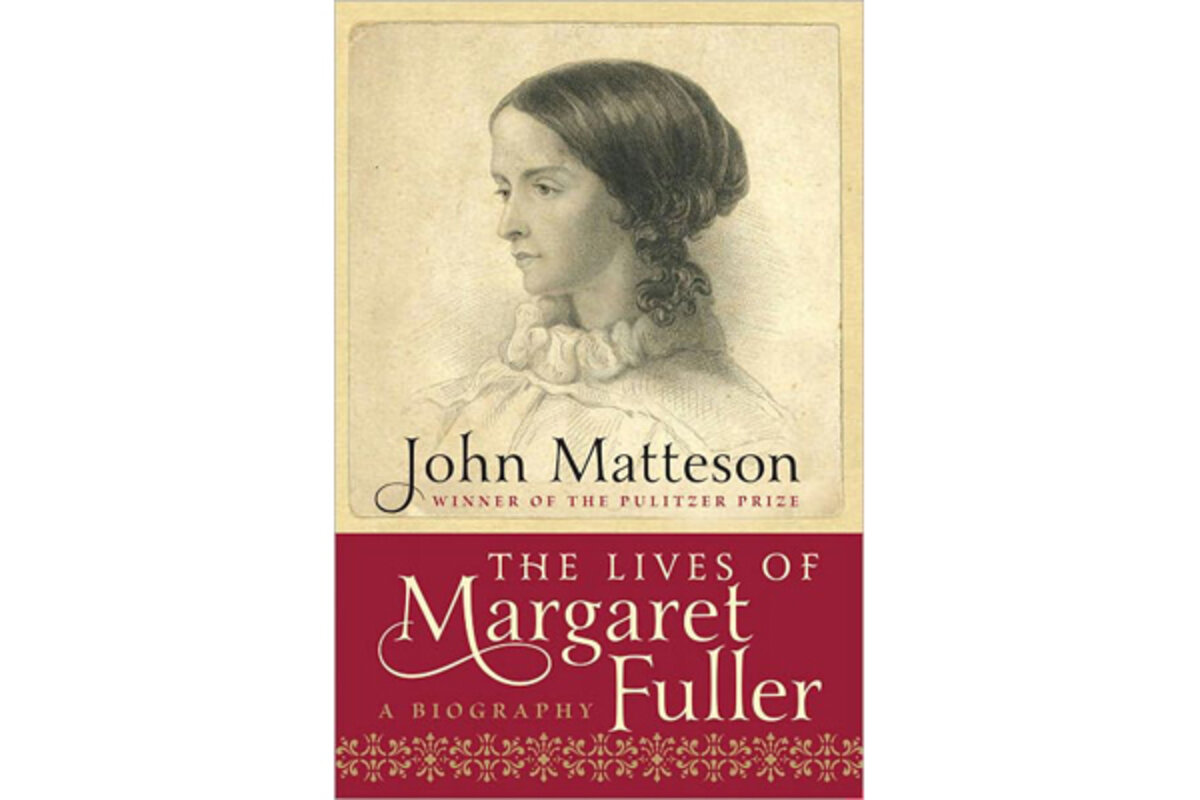The Lives of Margaret Fuller
Loading...
“How can you describe a Force?” asked her friend Sam Ward after she was drowned. “How can you write a life of Margaret?”
If writing a biography of Margaret Fuller was difficult at the moment of her premature death in 1850, it has become no easier in the decades since. Fuller, who has been described as “the mysterious, presiding ghost of American transcendentalism,” has faded rather quietly into the shadows of history – an ironic fate for a woman who was known for being anything but quiet during her life.
But Fuller may now be getting a bit more of the respect that she deserves. Award-wining biographer John Matteson has published The Lives of Margaret Fuller, a thorough, sympathetic examination of one of the more unusual figures of the 19th-century American intelligentsia – a woman who worked shoulder-to-shoulder with period geniuses such as Ralph Waldo Emerson and Amos Bronson Alcott; who alternately irritated and fascinated literary greats like Nathaniel Hawthone and Edgar Allan Poe; and who enjoyed rare pleasures such as a chance to drift down the Concord River with Henry David Thoreau.
Perhaps one of the biggest challenges in writing about Fuller is defining who she was and the contribution that she made. She was certainly a bright light and energizing presence of her time. A brilliant “conversationalist” (a calling perhaps best understood today as a type of interactive lecturer), Fuller was a figure of passion and conviction. Inspired by both the American transcendentalists and the German romantics, Fuller believed ardently in the individual integrity and potential perfection of each being. She advocated forcefully for the rights of women, abolitionism, and education and prison reform. She visited Sing Sing prison and took an active interest in the welfare of prostitutes – not exactly everyday activities for a woman of her time and place.
Although Fuller was also a prolific writer – she was an editor for The Dial (the influential publication that Emerson called his “antidote to narrowness); the acclaimed author of “Woman in the Nineteenth Century” (sometimes called the first serious work of American feminism); a columnist hired by Horace Greeley to work as the first literary editor at the New York Tribune; and one of American journalism’s first foreign correspondents – she is rarely read today. (Even in her time, some readers struggled to embrace her work. One unkind wag noted that the transcendentalists “read Dante in the original Italian, Hegel in the original German ... and perhaps the hardest task of all, Margaret Fuller in the original English.”)
But Fuller’s life, fortunately, is greater than the sum of her words. A born-and-bred New Englander, she was profoundly influenced by her rather bumptious father Timothy – later a US congressman – who homeschooled young Margaret so rigorously that Matteson calls her “in her time, the best read woman in America and the one most renowned for her intelligence.”
Matteson, who won the 2008 Pulitzer Prize in biography for “Eden’s Outcasts,” his examination of the lives of Louisa May Alcott and her father Amos Bronson, presents Fuller with insight and nuance. In her own words, Fuller was an “odd and unpleasant girl” whose brilliance won her more rejection than acceptance. As a young woman, she became an earnest if often graceless seeker of truth, and Matteson is respectful as he chronicles her breakthroughs and her struggles as she urgently pursues both philosophical truths and personal acceptance.
“Fuller was both gifted and giving,” writes Matteson, “but she could be arrogant, irritable, and condescending.... She was capable of both stoicism and self-pity, of sublime insight and naive self-delusion. She could inspire. She could infuriate. She seldom soothed.”
In a dramatic final coda to her life, Fuller traveled to Italy, met with revolutionary leader Giuseppe Mazzini, and was caught up in the drama of that country’s Risorgimento. She also met a young Italian nobleman – Giovanni Ossoli – became pregnant with his child, and eventually married him.
While traveling back to the US in 1850, the boat carrying Fuller, Ossoli, and their young child, Angelino, was shipwrecked a short distance from New York’s Fire Island. Almost all the other passengers were saved but Fuller and her family drowned. (It is a horrendous bit of irony that Fuller had long nursed a nightmarish fear of drowning.)
Lost along with Fuller was a manuscript that she was bringing to New York to publish as a history of the Risorgimento. Might it have been her greatest work? Some who knew her say yes. We will never know.
Matterson divides his book into chapters with titles like: “Prodigy”; “Apostle”: “Ecstatic Editor”; “Seeker of Utopia”; “Internationalist”; and “Revolutionary”. He certainly proves his point that Fuller led many lives, crammed into 40 short years. And yet, underneath them all, in many ways, she remains always the same. Her earnestness, her striving, her brilliance, her passion, and even her awkwardness unite the different phases of Fuller’s life and make her the unique creature that Matteson’s biography proves her to be.
Marjorie Kehe is the Monitor’s Books editor.
Join the Monitor's book discussion on and .




